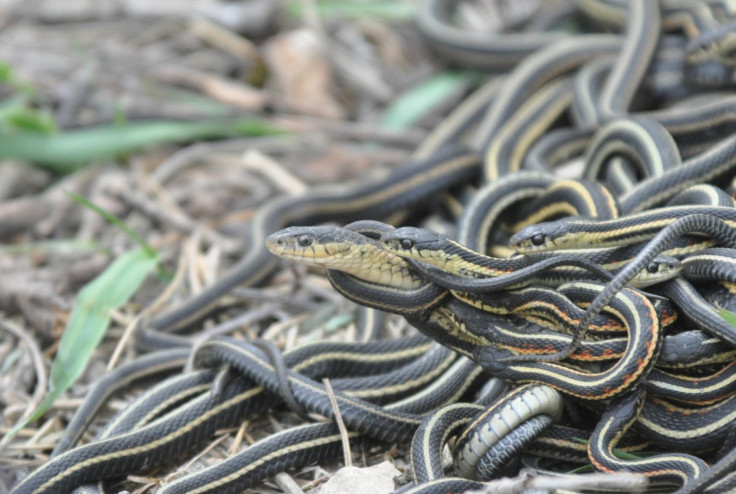Sex frenzies no good for male snakes, with their orgies leading to ageing and early death
Males of this species stick out a full 21-day orgy without eating, ruining their body condition and shortening their lives.
Male red-sided garter snakes live fast and die young, while females of the species slow down and live to reproduce another day. These two very different evolutionary strategies appear to work well for the Canadian red-sided garter snake.
"Organisms that 'live fast' are characterised by rapid growth and maturation, and high reproductive output, but age more quickly and have short lifespans. Conversely, organisms that 'live slow' grow and mature more gradually and have lower reproductive output, but age more slowly and have longer lifespans," write the authors of a study published in the journal Royal Society journal Proceedings B.
Male red-sided garter snakes engage in gruelling 21-day orgies in which they forgo food to spend more time having sex. The males end up paying for these extreme sexual activities with shortened lives and being in worse condition when they go.
The study analysed a population of red-sided garter snakes in Manitoba, Canada, looking at the length of their telomeres. These are the end sections of chromosomes that protect the body of the chromosome from damage. Telomeres gradually shorten throughout the lifespan due to accumulated damage. The longer the telomere, the better protected the chromosome is.
Female garter snakes' telomeres did not seem to shorten with age, but the males' telomeres got shorter as they got older. The males lost body condition faster as they aged. There were no males older than 6 years in the population studied, while females could reach up to more than 9 years of age.
The sex differences between the males and females represent two different evolutionary strategies, the authors argue. The males emerge from their 8-month hibernation pumped with high levels of corticosterone, which boosts their energy levels for searching for mates, courtship and sex. These activities take their toll on the males every year.

Their female counterparts, however, only dip into the annual mating orgy for 1-3 days before heading off to the feeding grounds. This allows them to prioritise maintenance of their DNA and cells, lengthening their lives and leading to more opportunities to reproduce in later years.
This isn't the females' only strategy to limit their levels of stress and exhaustion. Although they engage in the mating orgy every year, the females only reproduce every other year, depending how much stored fat they have to see them through.
"Our previous research has shown that females can store sperm for up to 15 months or more before she uses the sperm to fertilise her eggs," said study author Christopher Friesen of the University of Sydney in a statement.
© Copyright IBTimes 2025. All rights reserved.






















